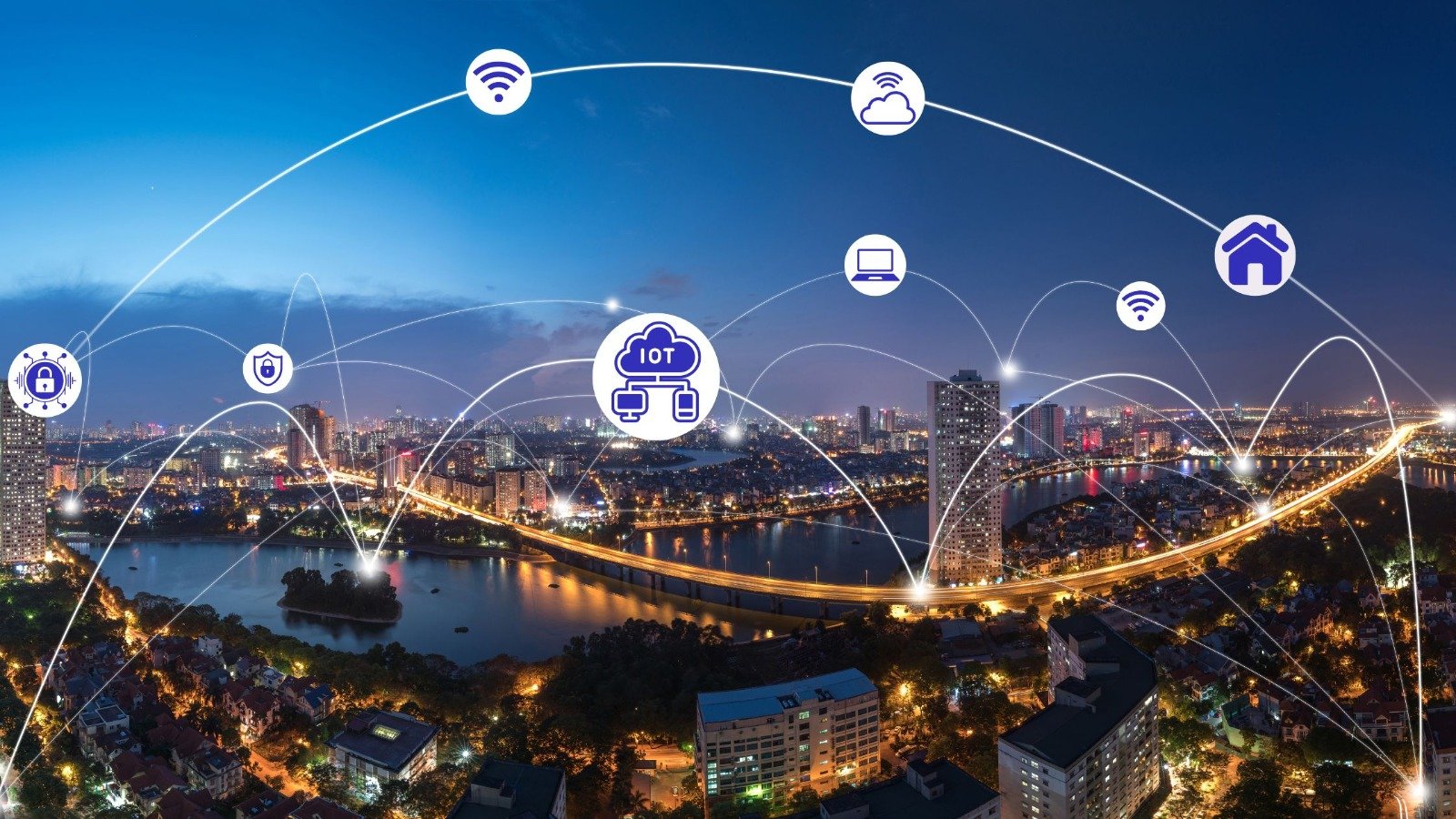
Building Secure, Sustainable Smart Cities through IoT Technologies
- by phdblog
Introduction
The swift advancement of smart cities underscores the adoption of cutting-edge technologies aimed at fostering sustainable, efficient, and secure urban landscapes. Smart cities leverage Internet of Things (IoT) devices, data analytics, and real-time monitoring systems to optimize urban services, improve citizen well-being, and achieve energy efficiency (Houichi et al., 2024). From healthcare to energy management, IoT-enabled smart solutions are transforming how people interact with their surroundings, offering unprecedented convenience and opportunities for progress. However, this increased connectivity also introduces critical cybersecurity concerns, such as data breaches and unauthorized access that could undermine citizen trust and system efficacy.
Smart healthcare exemplifies IoT technologies can deliver personalized and effective patient care. By connecting devices to monitor patient health, these systems enable real-time data collection and facilitate AI-driven insights to predict patient health trends and tailor treatments. Similarly, smart transportation systems utilize AI-driven traffic management tools, IoT sensors, and encrypted communication protocols to enhance safety, efficiency, and convenience for commuters (Sarkar et al., 2024).
Addressing cybersecurity threats is vital to protecting these interconnected systems. Robust encryption protocols and authentication mechanisms play a central role in safeguarding user data from cyber attacks. Furthermore, blockchain technology introduces a new level of transparency, ensuring immutable record-keeping and accountability across various urban operations (Roopa Devi et al., 2024).
2. Analysis and Discussion
A secure smart city exemplifies the potential of IoT-based smart city technologies to transform urban living while protecting citizen data. By integrating interconnected devices, IoT enables real-time data processing to optimize public services, improve resource management, and reduce waste. For example, smart energy systems utilize IoT-driven analytics to balance energy production and consumption, leading to greater efficiency and a reduced carbon footprint. Real-time data monitoring ensures effective threat detection, enhancing resilience against cyber threats and unauthorized access attempts (Singh et al., 2024).
IoT revolutionizes smart healthcare through seamless patient monitoring, AI-powered data processing, and data-driven treatment recommendations. This integration provides doctors with predictive analytics, which allows proactive medical intervention and enhanced patient outcomes. However, safeguarding patient data through advanced encryption and authentication measures is critical, given the sensitive nature of medical information. Smart transportation systems provide another tangible benefit through the application of IoT technologies, AI algorithms, and encrypted communication networks that enable efficient traffic management and optimized routes. These systems improve the commuting experience while maintaining data privacy through secure protocols.
Despite the numerous benefits, the increasing connectivity also introduces cybersecurity challenges. Cybersecurity targeting IoT systems can disrupt essential city functions, compromise citizen data, and undermine public trust. Continuous monitoring and response strategies that use automation and data analytics are crucial to mitigating potential security risks. Moreover, implementing blockchain-based records can enhance transparency, improve accountability, and address security concerns across various smart city operations (Vempati & Nalini, 2024).
3. Conclusion
The implementation of IoT technologies in smart cities offers transformative benefits that reshape the urban landscape through optimized services, enhanced efficiency, and improved quality of life. From healthcare and transportation to energy management, the capabilities of interconnected devices and data analytics drive innovations across multiple sectors. However, to achieve sustainable and secure smart cities, robust cybersecurity protocols must be in place to protect sensitive data, prevent unauthorized access, and mitigate potential threats
As cities continue to adopt IoT-driven solutions, the need for advanced encryption, multifactor authentication, and continuous real-time monitoring becomes paramount. By embracing proactive cybersecurity measures and leveraging cutting-edge technologies, engineers and policymakers can build resilient, efficient, and sustainable urban systems that enhance citizen trust and pave the way for a smarter, more sustainable future
4. Reference
1.Houichi, M., Jaidi, F., & Bouhoula, A. (2024). Cyber Security within Smart Cities: A Comprehensive Study and a Novel Intrusion Detection-Based Approach. Computers, Materials & Continua, 81(1).
2.Sarkar, M., Lee, T. H., & Sahoo, P. K. (2024). Smart Healthcare: Exploring the Internet of Medical Things with Ambient Intelligence. Electronics, 13(12), 2309.
3.Roopa Devi, E. M., Shanthakumari, R., Vinothkumar, S., & Balasurya, K. R. (2024). Introduction to Blockchain Technology for Smart Cities. Digital Twin and Blockchain for Smart Cities, 1-26.
4.Singh, C., Chadha, S., Bathrinath, S., Dixit, I., Suganthi, P., & Sathish, T. (2024, April). Iot-based smart cities: Challenges and future perspectives. In 2024 Ninth International Conference on Science Technology Engineering and Mathematics (ICONSTEM) (pp. 1-6). IEEE.
5.Vempati, S., & Nalini, N. (2024). Securing Smart Cities: A Cybersecurity Perspective on Integrating IoT, AI, and Machine Learning for Digital Twin Creation. Journal of Electrical Systems, 20(3), 1420-1429.
Introduction The swift advancement of smart cities underscores the adoption of cutting-edge technologies aimed at fostering sustainable, efficient, and secure urban landscapes. Smart cities leverage Internet of Things (IoT) devices, data analytics, and real-time monitoring systems to optimize urban services, improve citizen well-being, and achieve energy efficiency (Houichi et al., 2024). From healthcare to energy…
